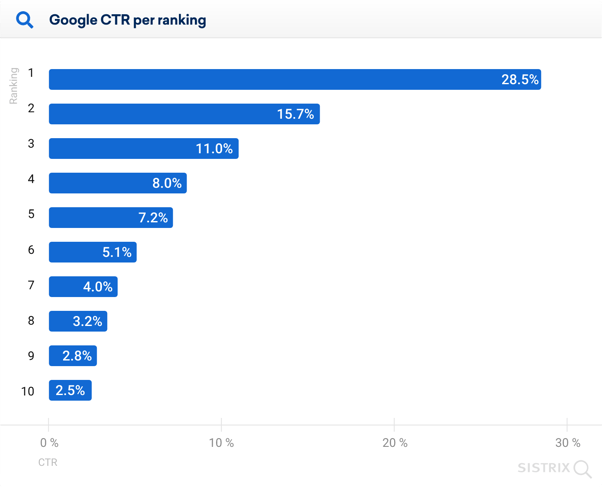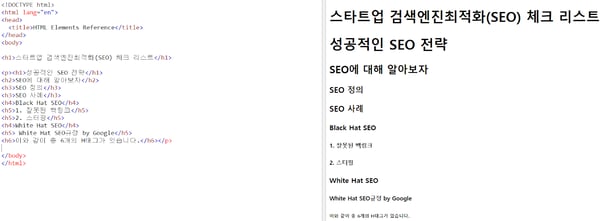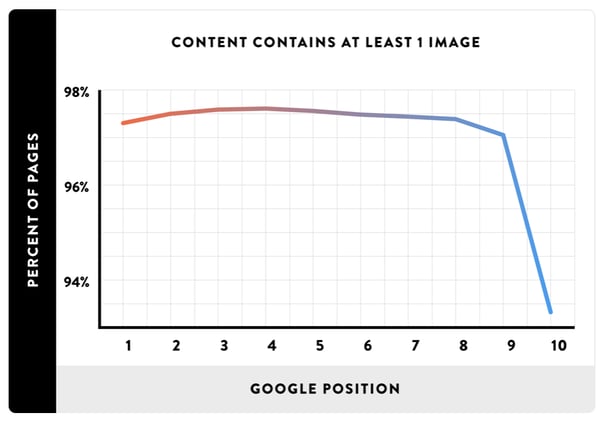Share this
6 SEO Checklists for Beginners
by Jin on Aug 2, 2022 8:30:00 AM
Contents
- Google Search Engine Blocks Posts from Being Exposed?
- Keywords for Search Engine Top Exposure
- Increase the Number of Visitors with Title Settings
- The Longer the Writing, the Better?
- Getting rid of the Boredom of Long Posts
- Do Not Repeat Keywords
- How to Acquire a Sense of Keyword Selection

Among the people who want to get high-quality information quickly, how many people would see up to 5 pages of the search results? Unless you're a person who doesn't have a lot of information or searches for in-depth information, no one will see this. That's why we need to prioritize the upper exposure on search engines. If you have a good budget, you can use the advertising link, which is the easiest way to expose yourself. However, it is necessary to reconsider whether this method is efficient.
NAVER is running paid advertisements through PowerLink and so does Google through Google Ads, but there is a limit because no company would want to invest plenty of money on uncertain results. Therefore, upper exposure through SEO can be the answer.
Then, can we expose the page with SEO through our efforts? The answer is "YES". Google SEO evaluation criteria are very detailed. But that doesn't provide a clear scorecard of your actions. However, the importance of each item can be guessed, so it is necessary to improve items with a relatively large influence.
 Google Click-Through Rate Per Ranking (Image by SISTRIX)
Google Click-Through Rate Per Ranking (Image by SISTRIX)
Although there are technical aspects of many SEO strategies that require outside help, as search engines are constantly evolving, it will be difficult to confront them on their own without clear calculation methods. However, even if the 'scoring' for a certain item changes, if you understand the ‘criteria’ of the search engine, you can create high-quality content that meets the criteria, ensuring that you are competitive within your capabilities. The Google search engine aims to provide users with accurate information that fits the search keyword. So you can appeal that your page is the right content for what users are searching for. Before we learn how to do SEO at a relatively low cost, let's take a look at what's important about Google's search engine with the wrong SEO cases.
1. Google Search Engine Blocks Posts from Being Exposed?
Understanding Black Hat SEO via Backlink
Black Hat SEO refers to a set of practices used to rank sites or pages by violating the search engine's terms of service. The cases that violate the search engine's terms of service are very detailed, but you only need to remember this: ‘Does it contribute to value creation?’
Since the purpose of the search engine is to provide 'value-creating content', it determines the content appropriate to the information that the searcher wants to find and exposes it to the top. Therefore, if the word you set with the search keyword is not associated with the content of the article, the content is considered to have failed to comply with the webmaster guidelines and may be subject to exposure restrictions on the Search Engine Results page (SERP). One of the most common Black Hat SEO cases is the 'backlink'.
A backlink is a link from one website to a page on another website. The backlink is one of the SEO strategies, which can increase the reliability of the site and result in high scores from search engines. This is because the search engine judges the backlinked site as a good site if it becomes a backlink within good content when an influx of other sites is made for more specific information or fact-checking. However, if an untrusted site is linked to its page, the score will be lowered by judging that it is a commercially purchased link or something else.
Therefore, you should write good content so that other information reproducers could leave their site sources, and if you leave it to a backlink specialist, you should see how the work goes.
2. Keywords for Search Engine Top Exposure
Now let's see if we can do SEO for higher exposure while following the guidelines.
Short Tail vs Long Tail
Keywords are search words, so it's important to know which keywords should be included in the content. However, if you list words that aren't relevant to the content to take advantage of simple topics, you can commit another Black Hat SEO called Keyword Stuffing. How should we set keywords that increase accessibility without being suspected of stuffing?
Keywords are divided into a short tail and a long tail. Which of the two keywords is better depends on the purpose of the content. If the goal is to attract a lot of traffic in a short time, you can increase accessibility by selecting keywords from hot topics such as entertainment news. On the other hand, if you want to attract blog subscribers or provide accurate information to highly relevant people, you should produce more specific keywords.
 Importance of Long Tail Keywords (image by BACKLINKO)
Importance of Long Tail Keywords (image by BACKLINKO)
Short tail and long tail can be divided according to the search results range. Short tail keywords include a wide range of information with one or two keywords. As it is universal, the number of inflows changes according to the topic. Even though the number of basic searches is high, there are many related sites, so it is not competitive to promote one’s website and increase the visit rates.
On the other hand, long tailed keywords usually consist of three or more words and are used by searchers to find specific information. Just as the content becomes professional and clear by specifying the target, it is more likely to be exposed to searchers whose needs are clear by setting keywords that are also dissolved into the content. Content using long tail keywords may have less average search volume, however as there is not enough content suitable for keywords, the possibility of top exposure increases without using paid advertisements. For business purposes, if the content with the long tail keyword set is highly exposed, you can contact potential customers who have a clear need to search for specific keywords. As a result, the higher the exposure, the greater the inflow to the site, and the greater the probability that the site's users will naturally convert into customers. In addition, long tail induces regular visits, so if you continue to post with long tail keywords, you can establish yourself as a site that provides high-quality content. Of course, you don't have to sublate short tail keywords. You can use a short tail to collect lots of traffic while also using a long tail to gain competitiveness with high exposure and accurate target inflow.
3. Increase the Number of Visitors with Title Settings
Optimize Searches with Logical Structuring Via H-tag
First, let’s find out what the H-tag is.
If you have chosen a long tail keyword, you should choose a title that will show it well. At this time, there is one thing to consider about exposing Google search results. It's the Title form. This may be a little difficult for the HTML content related to the On-Site SEO, but you can think of it simply as a title and subheading. Although Title Tag has a greater impact on search rankings, understanding H-tag makes it easier to understand Title Tag.
H-tag means a heading tag that determines the order of importance of the title. H-tag means a heading tag that determines the order of importance of the title. It is divided into six stages, from H1 to H6, and as the number increases, the importance decreases. Therefore, when the keyword is entered, the search engine should look at the H1 of the text and find the appropriate keyword in the HTML keyword and display the keyword including it in the result window (SERP), so the title of the post should be set to H1. Creating titles[H1] with long tail keywords and setting paragraph lines, detailed titles in order from H1 to H6, not only provides well-organized writing to search engine users but also creates content optimized for search.
 Example of H-tag
Example of H-tag
In the example image above, the title 'Successful 'SEO Strategy' is a subheading of the paragraph 'Let's Find Out About SEO', of which the 'SEO Cases' is included in the subheading of the paragraph. Long sentences can be made into neat results by varying the form according to the table of contents, so when writing, you can give an H-tag that fits the paragraph.
Difference between H-tag and Title Tag
The title tag is the title seen on the search engine results page (SERP), and the H tag is the content title. Both factors must be considered for higher exposure, and as both keywords have to include key keywords, it does not matter if they are the same or different. Title tags are more important because users will click on the link. So, many sites have applied the title tag. Also, it is important to create organized content using the H-tag because the score of the site increases depending on how long the searcher stays in the content. H-tag SEO Usage (Image by FreshChalk)
H-tag SEO Usage (Image by FreshChalk)
One thing to note is that the H-tag does not simply specify the size and thickness of the letter. Because the computer does not recognize the content, it cannot distinguish the importance of the content just because the font size is different. The reason for using the H-tag is to allow the search engine to understand the structure of the text and classify it. As it is a good article to write in an organized way as a topic, it is recommended that H1, which represents the topic of the article, be used only once to increase the accuracy of the search.
4. The Longer the Writing, the Better?
Determining the appropriate quantity for the target
Now, do you understand what searchers and search engines are pursuing? Before "Good-Quality Information", we learned how to select content keywords and completely logical data structures. The next thing to consider is the appropriate quantity of good content. As it is indicated above, search engines recognize information that produces value as good information. So most of them believe that the longer the content, the better and it is usually said that more than 2,000 characters are a long article.
The person who is searching for related information wants to know about the data, so they don't complain about it being long. Rather, a well-organized article well centered on keywords can save users the trouble of entering multiple sites. Therefore, you will be more attached to the site, and you can visit it whenever you need that information, so you don't have to be afraid that there will be some dropouts.
However, depending on the purpose of the writing, it is difficult to deliver the correct information in long sentences, so the target must be set to determine the appropriate quantity. If you're still vague, keep the aforementioned elements and write within 2,000-3,000 characters, 800-1,000 characters, or 500-600 characters and analyze the traffic. In addition, if the keyword is specified within 100 characters of the body, it can be exposed to a top page because it is highly relevant, and users can also be interested in the body content displayed in the result window, so you should work hard on making hooks.
5. Getting Rid of the Boredom of long posts
Utilize Appropriate Image
If you have determined the length of the text, you must decide which image to use.
 Importance of Proper Image Insertion (Image by BACKLINKO via imonomy)
Importance of Proper Image Insertion (Image by BACKLINKO via imonomy)
Google recommends proper use of images between texts because it highly evaluates the reliability of content with images attached. If a long text consists of over 2,000 characters, the reader's concentration will be blurred. Therefore, attach an image related to the text for the reader.
6. Do Not Repeat Keywords
Writing long articles that do not correspond to Black Hat SEO can be said to have good content conditions, but using specific keywords too often can also be misunderstood as keyword abuse, which can be underestimated in terms of search engine accuracy and it can reduce immersion.
Use Similar Words
Replacing key keywords with similar words can be one way. Search engines use a similar technique to LSI technology (potential aesthetic analysis). LSI technology is a technology that allows you to see various related words such as "orchard, efficacy" and conclude that an apple is an apple. Similarly, if you include many words that can be expanded about keywords, you can identify the relationship of words, measure the relevance, and recommend them.
7. How to Acquire a Sense of Keyword Selection
Getting Keyword Insight through Google Search
So far, we've looked at the main parts of keywords. If you still don't know which keywords or similar words to use, then use Google search. Content that has carried out the aforementioned SEO strategy well is likely to be exposed to the top. Therefore, search for short tail or long tail related to the topic you want to write and refer to what words you use. Through this process, you will learn the title keyword, the use of similar words in the body, and how to arouse the reader's interest by analyzing what the first sentence is like by looking at the link users clicked.
So far, we've learned about basic SEO strategies that are easy to follow. If you keep the mentioned items above and post them consistently, it will work. But, there's still a lot more to be concerned about for SEO. If you continue to work hard and create high-quality content, there will be a moment of glory when you naturally see results on the search results page, so don't give up and try.
Related Articles
- Why do Startups Need SEO?
- The best ways to do NAVER SEO
- How to get ranked on Search Engine in South Korea
If you need more specific information, Get your Free SEO Consulting